Recent Posts
Winter Snow and Storm Preparedness: Essential Tips from SERVPRO of Missoula
1/2/2025 (Permalink)
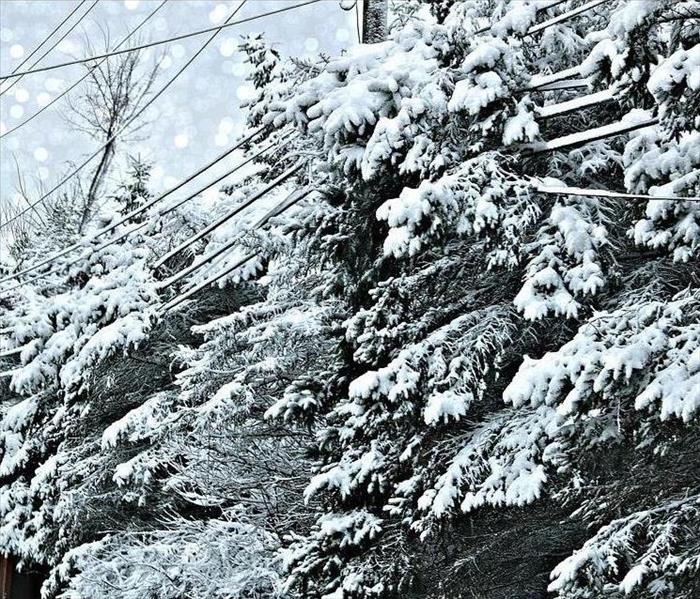 It’s important to prepare for winter storms before severe weather strikes.
It’s important to prepare for winter storms before severe weather strikes.
Winter storms in Missoula can bring heavy snow, freezing temperatures, and unexpected challenges. While the beauty of winter is undeniable, snowstorms can cause significant property damage if you're not prepared. SERVPRO of Missoula is here to help you get ready for the season with these essential winter storm preparedness tips.
1. Protect Your Pipes: Freezing temperatures can cause pipes to burst, leading to costly water damage. Insulate exposed pipes, and seal gaps around windows and doors to keep cold air at bay.
2. Be Ready for Power Outages: Snowstorms often cause power outages. Keep emergency supplies, including flashlights, batteries, blankets, and non-perishable food, in case you’re without power for an extended period. A backup generator is also a good investment.
3. Snow and Ice Removal: Clear your driveway, walkways, and steps regularly to prevent ice buildup and avoid slip hazards. Keep a snow shovel, ice melt, or sand on hand.
Stay proactive this winter to protect your home or business from winter storm damage. SERVPRO of Missoula is ready to assist with storm damage restoration when you need it most. Stay safe, and we’ll handle the cleanup!
What to do if a fire starts in your Missoula home
10/14/2024 (Permalink)
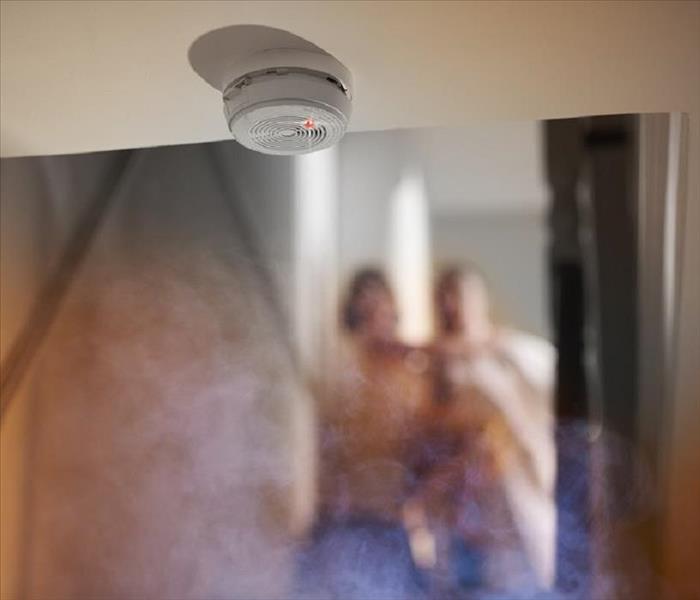 If a fire starts in your home, the most important thing to remember is “Get out, Stay out!”
If a fire starts in your home, the most important thing to remember is “Get out, Stay out!”
Sometimes fires happen. Despite common preventative measures, despite early warning systems, approximately 370,000 residential fires occur in the U.S. each year. In the event of such an emergency in your home, it is important to think and act quickly, and talking with your family now about what to do during a fire can help ensure their safety if the unexpected does occur.
The number one thing to remember if a fire starts in your home (and becomes too large for a fire extinguisher) is to get out. The American Red Cross also advises to shout “Fire!” several times as you are evacuating, to alert any others in the residence. Check closed doors on your escape route to make sure they’re not warm. If a door in your path is warm to the touch, do not open it; use your secondary route, or place a wet towel under the door and call 9-1-1 if you cannot evacuate safely. If your evacuation route is filled with smoke, stay low and close doors behind you until you reach an exit. As soon as you are outside, call 9-1-1 and go to your family’s emergency meeting place.
Once your family is safely evacuated and the Missoula Fire Department has responded to the fire in your home, call SERVPRO of Missoula as soon as possible to begin the process of making the fire “Like it never even happened.”
For more fire safety tips, head to https://www.redcross.org/get-help/how-to-prepare-for-emergencies/types-of-emergencies/fire/if-a-fire-starts.html
Missoula Dryer Fires: Clean Lint Traps Save Lives.
8/22/2024 (Permalink)
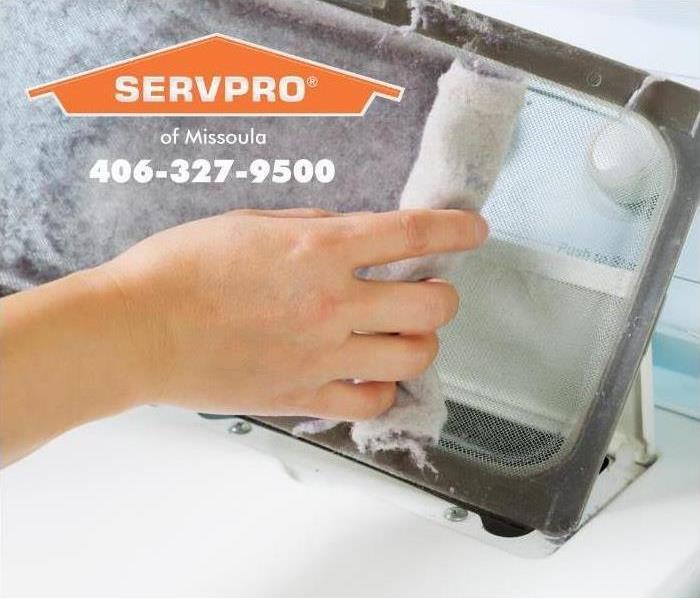 A clean lint trap saves lives!
A clean lint trap saves lives!
According to the U.S. Fire Administration, about 2,900 residential dryer fires occur annually, with nearly 1,000 of those (34%) caused by improper cleaning of the lint trap or vent ductwork. The good news is that preventing these fires is straightforward and only requires a few simple steps.
The most crucial action you can take to prevent dryer fires is to clean the lint trap after every drying cycle, not just once a month or week. This daily maintenance not only reduces the risk of a fire but also helps your dryer operate more efficiently, drying your clothes faster. Additionally, perform a quick inspection at least once a month: check the back of the dryer for lint buildup, ensure the venting system is free of damage or obstructions, and make sure the outdoor vent cover is clear and opens when the dryer is in use. It's also a good idea to thoroughly clean the vent system once a year.
In the event of a fire in your Missoula home, whether it’s from the dryer or another source, call SERVPRO of Missoula. Our experienced fire restoration team is ready to help restore your home and make it “Like it never even happened.
Wildfire Preparedness in Missoula
7/10/2024 (Permalink)
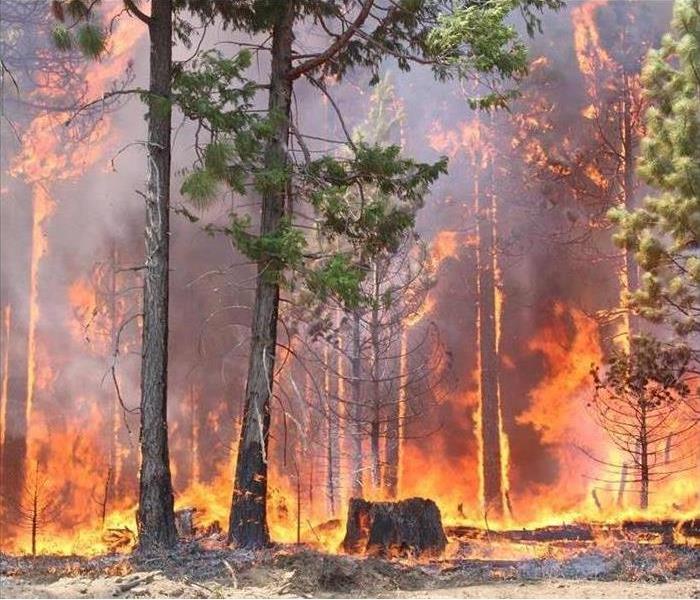 Wildfires are unpredictable, but that doesn’t mean you have to be unprepared!
Wildfires are unpredictable, but that doesn’t mean you have to be unprepared!
Montana, particularly areas like Missoula County and the Bitterroot Valley, faces significant wildfire risk, with a high percentage of properties vulnerable to damage. To safeguard your Missoula home against wildfire threats, proactive steps are crucial, especially as wildfire season typically peaks in late summer and early fall.
Start by preparing well in advance. Register for your community’s emergency alert system to receive timely notifications about approaching wildfires and evacuation advisories. Develop and rehearse at least two evacuation routes from your residence, ensuring plans include arrangements for pets and livestock. Assemble an emergency go-bag that accommodates the needs of all household members, including pets.
During the preparation phase, prioritize home safety measures. opt for fire-resistant materials when building or renovating your home to enhance its resilience against wildfires. Maintain a readily accessible hose connected to a water source that can cover all areas of your property. Additionally, clear combustible materials, such as leaves and debris, from within at least a 30-foot radius around your home to create a defensible space.
In the unfortunate event that your home sustains fire or smoke damage despite precautions, SERVPRO of Missoula stands ready to assist with comprehensive services including board-up, debris removal, emergency power installation, temporary lighting, and structural repairs. Contact us promptly at 406-327-9500 for swift and effective restoration, making your home "Like it never even happened." Prepare now to safeguard your home and loved ones against the unpredictable nature of wildfires in the Missoula area.
The Danger Slow Leaks Present to your Missoula Home
5/21/2024 (Permalink)
 Long-term water damage can lead to warped walls, discoloration, and mold.
Long-term water damage can lead to warped walls, discoloration, and mold.
Water damage caused by a long-term leak or other sources of moisture accumulation over time is scary for homeowners for multiple reasons. In many cases, homeowners have no idea a leak is there. We often think; that insurance is supposed to cover sudden and accidental damage. However, long-term water loss claims are often denied, Long-term water damage also regularly leads to secondary damages like mold.
As a homeowner, the best way to deal with long-term water damage is to prevent it. Like any other part of your home, pipes experience wear and tear, and regular maintenance and periodic replacements may be necessary to keep things running smoothly. Scheduling an annual or bi-annual plumbing inspection can help determine if any repairs are needed. For instance, a plumber can check to see if your water pressure is too high or if your water has a high mineral content—both of which can stress your pipes and reduce their lifespan—and recommend an appropriate fix.
If an out-of-sight leak does occur, how can you know? There are a few common signs to watch out for: your water bill is significantly higher than usual; decreased water pressure in your home; wet spots around sinks, toilets, or tubs; warped, discolored, or wet walls; a persistent mildew smell. If you can see or smell signs of water damage in your home, or if your plumber discovers a long-term leak, call SERVPRO of Missoula as soon as possible. Our technicians can be onsite within the hour to begin mitigating the damage. If insurance coverage ever becomes an issue, your project manager will be able to get you a quote directly.
Why SERVPRO? We’re with you every step of the way
3/21/2024 (Permalink)
SERVPRO isn’t the only restoration service out there, and not even the only restoration service in Missoula. With a few options to choose from, you may ask “Why should I choose SERVPRO of Missoula in the event of water, fire, or mold damage in my home?”
The answer lies not only in our highly trained team and specialized technology but also (and perhaps more so) in our commitment to our customers from the very first call all the way through to final repairs and cleaning. Our promise to make water, fire, and mold damage “Like it never even happened” is not an empty one.
SERVPRO of Missoula technicians are on call to respond to emergencies 24/7, because we know emergencies rarely occur at a ‘convenient’ time. If you have a flood in your home, our team will be onsite that same day to extract water and begin drying out affected materials. Once your home reaches dry standards, we don’t just leave you to figure out the rest. SERVPRO of Missoula also works with your insurance company to make the process as easy for you as possible, and provides repair services as well as contents cleaning; our team’s collective experience ensures that we’ve covered all the small details, so you don’t have to
SERVPRO of Missoula isn’t only a restoration company; it’s a residential and commercial mitigation, repair, and cleaning company ready to take on a project of any size; and in the event of a loss in your home or business, it’s also a support system. If you call SERVPRO of Missoula for water, fire, or mold damage, you can rest assured we’ll be with you every step of the way.
How SERVPRO of Missoula makes commercial fire damage “Like it never even happened”
2/7/2024 (Permalink)
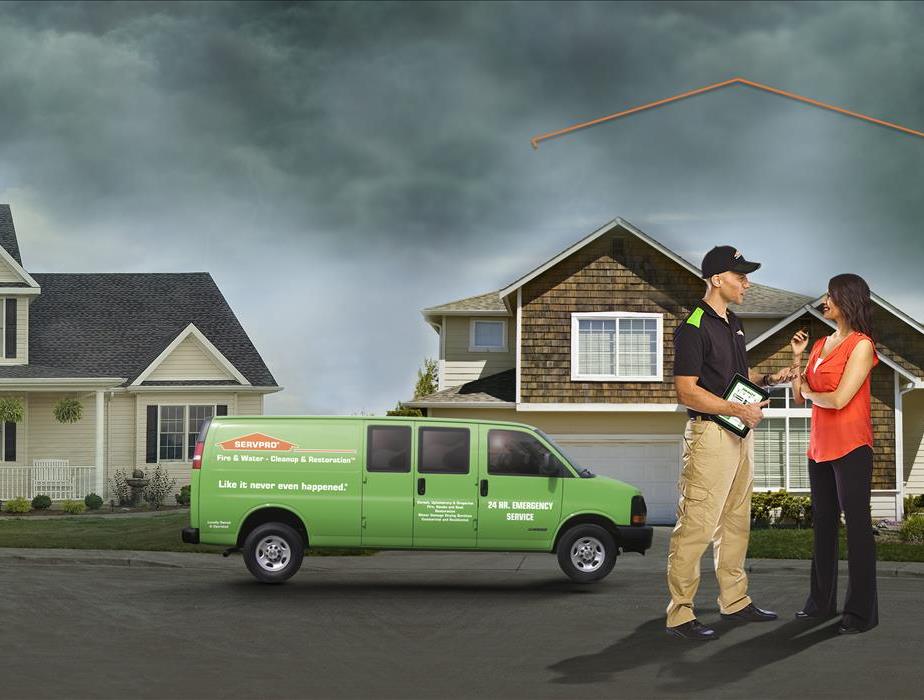 A fire in your business can make you feel hopeless, but SERVPRO of Missoula can make it “Like it never even happened!”
A fire in your business can make you feel hopeless, but SERVPRO of Missoula can make it “Like it never even happened!”
If you own a business, your priority is keeping the doors open. When something unexpected, like a fire or smoke damage from a nearby fire—occurs, one of your primary concerns is how long the damage will take to fix. So, when you search for a restoration company to help get your business back to normal, and to get the job done, thoroughly and efficiently. That’s where SERVPRO of Missoula comes in.
Here at SERVPRO of Missoula, we’re committed to making that damage “Like it never even happened.” But what does efficient, thorough fire restoration look like? If a fire causes structural damage, a structural engineer will be called in to monitor the project. Next, our technicians will place air scrubbers throughout the affected area to filter smoke and begin purifying the air. Salvageable textiles will be sent to fabric restoration professionals while SERVPRO of Missoula technicians secure the necessary commercial permits to begin removal of all charred material within your business, and complete HEPA vacuuming and cleaning. Final deodorization takes place using an ozone or hydroxyl generator, and from there our experienced project managers will create a scope of work for any necessary repairs. Throughout the entire fire restoration process, your SERVPRO of Missoula project manager will always be available to answer questions and notify you of the job’s progress, so you can rest assured that everything is being done to make your commercial fire “Like it never even happened.”






 24/7 Emergency Service
24/7 Emergency Service




